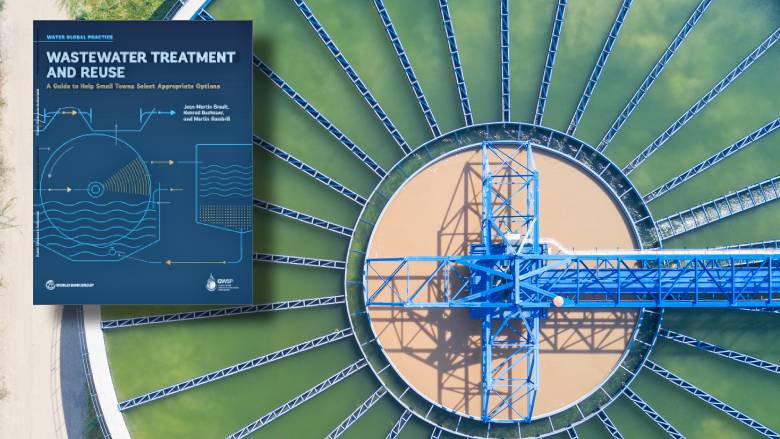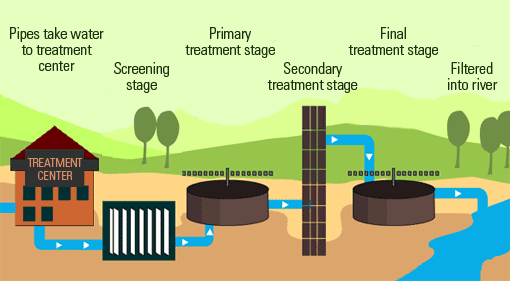Reliable Waste Water Treatment Equipments: Secret Techniques and Benefits
Reliable Waste Water Treatment Equipments: Secret Techniques and Benefits
Blog Article
Optimizing Waste Water Treatment Processes: Techniques for Improved Water Top Quality and Source Healing
In the world of wastewater therapy, the quest for boosting effectiveness and sustainability with procedure optimization is an ongoing search that holds tremendous relevance. From innovative technologies to cutting-edge resource recovery techniques, the landscape of wastewater therapy is progressing rapidly.
Significance of Refine Optimization
Enhancing waste water therapy procedures through precise procedure optimization is crucial for optimizing performance and ensuring environmental sustainability. By fine-tuning each step of the therapy process, from first intake to final discharge, water therapy centers can attain higher degrees of contaminant elimination, decrease energy intake, and decrease the generation of waste spin-offs. Refine optimization entails evaluating vital efficiency signs, such as hydraulic retention times, sludge retention times, and nutrient levels, to determine areas for enhancement and execute targeted services.
Efficient procedure optimization not only boosts the overall performance of waste water therapy plants however additionally adds to cost financial savings and regulative conformity. By optimizing processes, drivers can accomplish higher treatment capacities without the demand for significant framework investments. In addition, enhanced therapy efficiency results in cleaner effluent discharge, minimizing the environmental effect on getting water bodies and ecological communities.

Advanced Therapy Technologies
In the realm of drainage therapy, the application of innovative therapy innovations plays an essential role in improving the overall efficiency and effectiveness of the treatment procedures. These advanced innovations supply ingenious options to address complex pollutants existing in wastewater streams, making certain the removal of contaminants to fulfill rigid water top quality standards. Advanced therapy procedures such as membrane layer bioreactors, ozonation, progressed oxidation processes, and turn around osmosis allow the detailed removal of impurities, including emerging pollutants like drugs and individual treatment items.
In addition, these modern technologies promote resource healing by removing valuable materials such as phosphorus, nitrogen, and power from the wastewater. As an example, progressed nutrient removal technologies can recoup phosphorus and nitrogen for reuse in agricultural plant foods, while energy recovery systems like anaerobic food digestion can harness biogas for electrical power generation. By integrating sophisticated therapy technologies into wastewater therapy plants, drivers can improve water quality, decrease ecological influence, and move in the direction of an extra resource-efficient and sustainable method to wastewater management.
Source Recovery Methods
Source recovery techniques in wastewater therapy procedures play a crucial duty in taking full advantage of the usage of beneficial sources included within wastewater streams. One typical source recovery technique is the removal of nutrients like phosphorus and nitrogen from wastewater for reuse as plant foods or in commercial processes.
Water recuperation techniques, such as membrane layer innovations and advanced filtration systems, enable the treatment and reuse of water for non-potable applications like irrigation or commercial procedures. By carrying out resource recuperation methods in wastewater treatment plants, not only can beneficial sources be conserved and recycled, however the overall sustainability and performance of the treatment process can be dramatically improved. As the emphasis on source shortage and ecological sustainability continues to grow, the importance of integrating source recuperation techniques right into wastewater treatment processes becomes significantly noticeable.
Lasting Practices in Wastewater Treatment
Sustainable techniques in wastewater treatment incorporate an array of techniques aimed at minimizing the ecological effect of treatment procedures while making the most of resource healing. One vital aspect of sustainable wastewater treatment is the application of energy-efficient modern technologies to minimize the carbon footprint of therapy plants.
Additionally, the fostering of sophisticated therapy innovations that promote water reuse and recycling plays a critical duty in lasting wastewater monitoring. By treating wastewater to a high requirement, it can be repurposed for various non-potable applications, such as irrigation, commercial procedures, and even safe and clean water production in some cases. This not only conserves important freshwater sources however likewise lowers the quantity of effluent discharged right into the atmosphere.

Instance Research Studies on Effective Optimization
As wastewater therapy facilities significantly concentrate on lasting methods, real-world situation research studies showcasing effective optimization approaches act as very useful versions for industry advancement. One such case research revolves around the implementation of sophisticated nutrient removal innovations in a local wastewater therapy plant. By incorporating organic nutrient removal procedures and maximizing functional criteria, the center accomplished considerable decreases in nitrogen and phosphorus levels released into obtaining waters, eventually boosting general water top quality.
Another notable study involves the integration of anaerobic food digestion systems in an industrial wastewater treatment plant to boost energy recovery and resource performance (Waste Water Treatment). Via the food digestion of organic waste materials, the center not just created biogas for energy manufacturing but also decreased the volume of sludge calling for disposal. This twin advantage not just boosted the plant's sustainability performance but likewise caused price financial savings
These successful optimization methods show the capacity for wastewater therapy facilities to attain both environmental and financial advantages via reliable procedures and innovative techniques. By discovering from these situation research studies, sector experts can better maximize their own procedures to enhance water top quality and source recuperation.
Conclusion
To conclude, maximizing drainage treatment processes through sophisticated modern technologies, resource recuperation methods, and lasting techniques is critical for improving water high quality and maximizing source recovery. Waste Water Treatment. Study have demonstrated effective application of optimization methods in numerous wastewater therapy official website facilities. By continuing to focus on procedure optimization, we can make sure efficient and reliable treatment of wastewater, inevitably causing a much more ecologically friendly and sustainable strategy to taking care of water sources
By fine-tuning each action of the treatment procedure, from initial consumption to final discharge, water therapy facilities can accomplish greater levels of pollutant removal, lower power consumption, and decrease the generation of waste spin-offs.In the realm of waste water treatment, the execution of advanced therapy modern technologies plays a crucial role in boosting the general performance and effectiveness of the therapy procedures. By integrating sophisticated therapy modern technologies into wastewater therapy plants, operators can enhance water top quality, minimize environmental impact, and move towards a more sustainable and resource-efficient approach to wastewater monitoring.
By applying resource recovery techniques in wastewater therapy plants, not only can useful resources be saved and reused, however the overall sustainability and effectiveness of the therapy process can be substantially enhanced. Lasting methods in wastewater therapy incorporate an array of methods aimed at decreasing the environmental effect of therapy procedures while making the most of source recovery.
Report this page